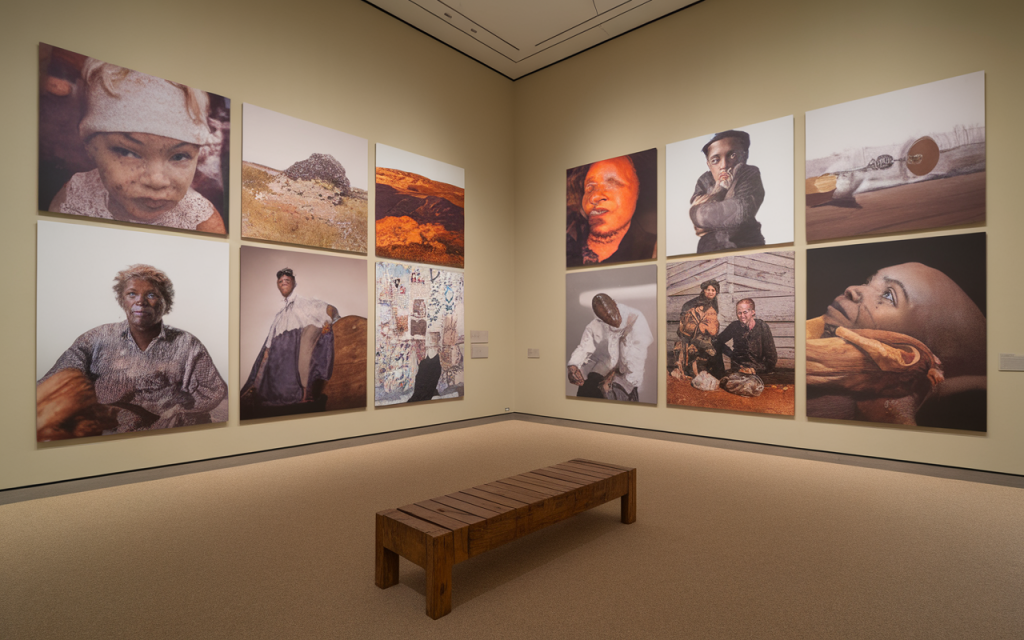An unmissable journey through Carrie Mae Weems’s visionary work
Turin’s Gallerie d’Italia is pulsating with creative energy as it hosts “The Heart of the Matter,” a career-spanning exhibition by multimedia artist Carrie Mae Weems. Running until September 7, this show offers an immersive dive into themes of race, gender, identity and power. For anyone keen on art that resonates on both a deeply personal and profoundly universal level, it’s a must-see before it closes its doors.
From Portland to global acclaim: Weems’s artistic evolution
Born in Portland, Oregon in 1953, Carrie Mae Weems has pioneered an approach that blends photography, video, text and performance. Over four decades, she has documented the lived experiences of Black Americans, using her own presence as a “muse” and alter ego in series that challenge stereotypes head-on. Key milestones on display include:
Kitchen Table Series (1990): Weems sits at a dining table in various emotional vignettes, exploring intimacy, family dynamics and resilience.
Preach (2002): Commissioned by a major Italian bank, this black-and-white suite captures African American church rituals and architecture, accompanied by poetic captions.
The Shape of Things (2021): A multimedia installation combining archival footage and original recordings, celebrating community strength through gospel music.
Curation by Sarah Meister: a deliberate dialogue
Under the expert eye of MoMA curator Sarah Meister, the exhibition’s layout guides visitors through Weems’s thematic arcs. Meister’s scenography balances intimacy and spectacle:
Smaller gallery nooks highlight early, black-and-white works, drawing visitors into close interaction.
Main halls feature larger installations, including video projections with immersive soundscapes.
An “audio sanctuary” room offers personal reflections by Weems on her inspirations and motivations.
Activism at the core: confronting social issues through art
Weems has never shied away from activism. Her work interrogates power structures and asks viewers to reconsider their own perspectives:
Representation: By placing herself at the center of many pieces, Weems reclaims control of the Black female narrative.
Intersectionality: Addressing race, gender and class, her art documents systemic injustices and human triumphs.
Community voice: Through collaborative video projects, she amplifies the stories of everyday people fractured by history.
Tips for making the most of your visit
To experience “The Heart of the Matter” fully, consider these practical suggestions:
Allocate at least 90 minutes to explore all rooms, read captions and watch video components.
Download the free audioguide on the museum’s app for behind-the-scenes context and artist interviews.
Book tickets online to avoid queues, choosing morning slots for a quieter atmosphere.
Take notes or sketch ideas in the on-site station to capture your personal reflections.
Embracing inspiration and empowerment
More than an art show, Weems’s retrospective is a powerful invitation to examine our shared humanity. As you wander among her photographs and installations, allow yourself to:
Feel the emotional impact of each image, from contemplative stillness to vibrant activism.
Reflect on your own identity and the stories that shape your perspective.
Engage in conversations with friends or fellow visitors about the themes you find most striking.
Beyond the exhibition: continuing the conversation
After your visit, consider extending the dialogue by:
Reading Weems’s published essays and interviews to deepen your understanding of her methodology.
Exploring other artists who address social justice through multimedia forms.
Sharing your experience on social media with the hashtag #HeartOfTheMatter to connect with a wider community.
With “The Heart of the Matter” closing soon, seize the opportunity to witness Carrie Mae Weems’s extraordinary journey. Her art not only documents history—it empowers us to shape a more inclusive future.
